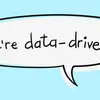
Visualisation is the use of graphics and visual elements such as maps, graphs, infographics and charts to represent data. This improves the audience’s ability to comprehend complex information, assess trends, and recognise patterns as it presents the data in a visually appealing format.
There are platforms and software applications that specifically cater to creating content that effectively communicates data.
According to Grand View Research reports, the Global Data Visualisation Tools market size is expected to reach $22.12 billion by 2030, expanding at a CAGR of 11.4% from 2023 to 2030.
Some of these tools include- Tableau by Salesforce, Power BI by Microsoft, SAS Visual Analytics by SAS Institute, SAP Lumira by SAP BusinessObjects, Oracle Analytics by Oracle, and Google Data Studio by Google.
These tools play a crucial role in business analytics. Businesses invest in data visualization tools as they help them convey complex information to the stakeholders and others involved in much simpler terms. They also stand to gain an advantage over other players by assessing data in ways that benefit them.
Visualisation tools also help people without technical expertise in data analysis to effectively decipher it. The simplified representation of data and the self-service interface of these tools allow users to access and interpret information required to make corporate decisions.
Here are 6 reasons why data visualisation tools are gaining popularity:
1. Data explosion
With the tremendous increase in data transmission, and the world constantly demanding upgrades, it becomes vital for any company to have an understanding of their businesses’s standing in the market. These tools deliver information quickly and in a manner that’s easy to understand, even for a layman.
2. Ease of access and operation
These platforms do not require domain-specific expertise in data analytics, hence any user can operate without additional training requirements. By giving complex data a simplifed visual representation, these tools allow users to easily read and recognise trends, patterns and other details.
.thumbnailWrapper
width:6.62rem !important;
.alsoReadTitleImage
min-width: 81px !important;
min-height: 81px !important;
.alsoReadMainTitleText
font-size: 14px !important;
line-height: 20px !important;
.alsoReadHeadText
font-size: 24px !important;
line-height: 20px !important;

3. Interactivity
Users can alter and change data according to their convenience. They can change the variables and explore the various outcomes. This also helps them foresee the probable scenarios that they would likely have to deal with in the near or far future. Thus the users can actively engage with the data and gain a deeper understanding.
4. Allows collaboration
In a highly globalised world, these tools allow geospatial communication. Multiple users can simultaneously work on projects, which allows for collaboration and decision-making at an international level.
5. Cross-platform software
By allowing users to access the software from multiple platforms and across devices, it widens the accessibility and contributes to collaboration as well. It can also be used across industries and sectors such as business, science, education, healthcare, and manufacturing, among others.
6. Contextualisation and clear communication:
When data is put into perspective based on specific contexts, it becomes easier to comprehend it. This clear understanding of the situation is vital for decision making and growth, both of which are heavily influenced by statistics.
Thus data visualization plays a crucial role in not just understanding the company’s past but its future as well. And it helps bridge the gap between the data analysts and decision makers.










